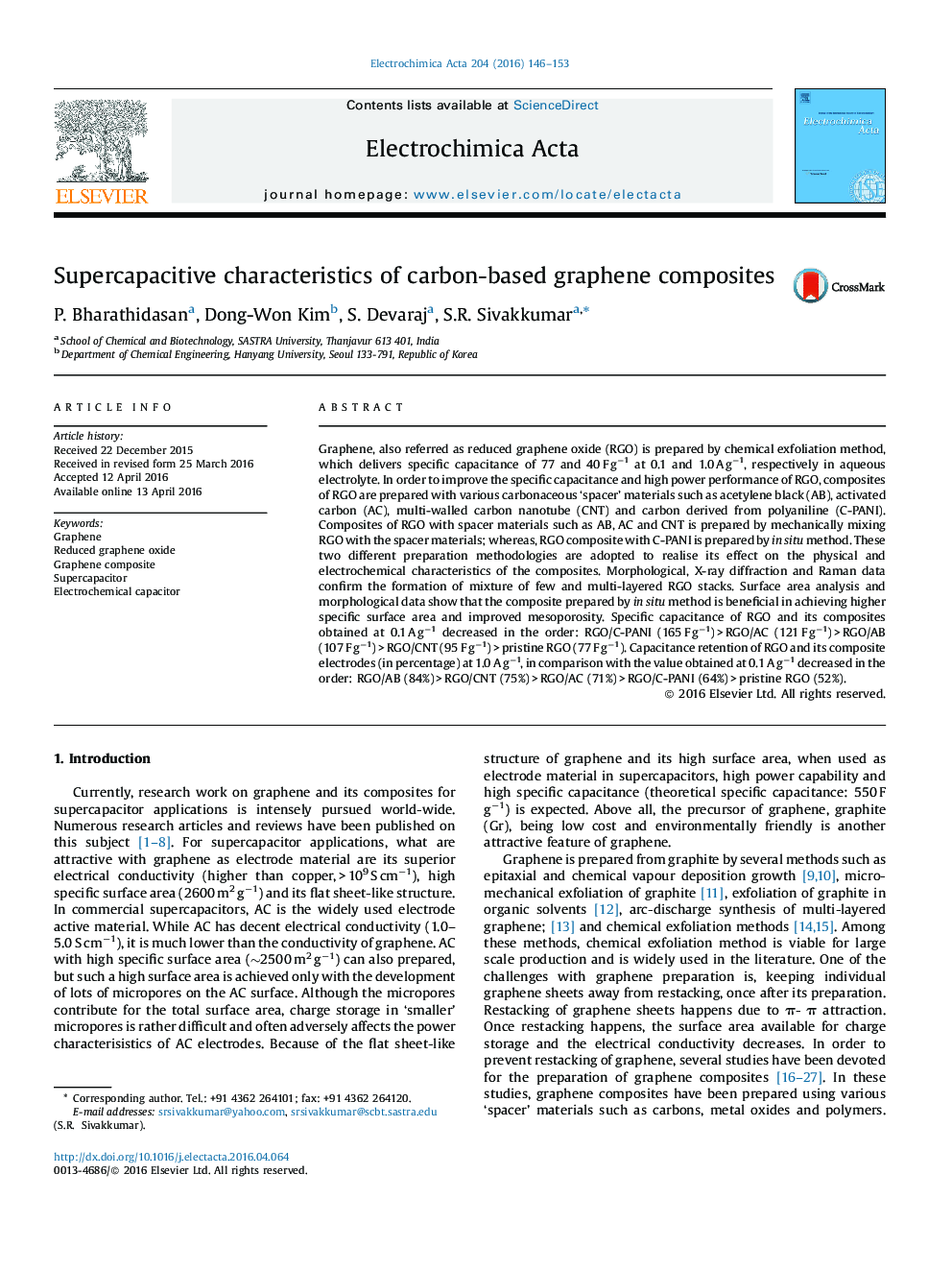| Article ID | Journal | Published Year | Pages | File Type |
|---|---|---|---|---|
| 182851 | Electrochimica Acta | 2016 | 8 Pages |
Graphene, also referred as reduced graphene oxide (RGO) is prepared by chemical exfoliation method, which delivers specific capacitance of 77 and 40 F g−1 at 0.1 and 1.0 A g−1, respectively in aqueous electrolyte. In order to improve the specific capacitance and high power performance of RGO, composites of RGO are prepared with various carbonaceous ‘spacer’ materials such as acetylene black (AB), activated carbon (AC), multi-walled carbon nanotube (CNT) and carbon derived from polyaniline (C-PANI). Composites of RGO with spacer materials such as AB, AC and CNT is prepared by mechanically mixing RGO with the spacer materials; whereas, RGO composite with C-PANI is prepared by in situ method. These two different preparation methodologies are adopted to realise its effect on the physical and electrochemical characteristics of the composites. Morphological, X-ray diffraction and Raman data confirm the formation of mixture of few and multi-layered RGO stacks. Surface area analysis and morphological data show that the composite prepared by in situ method is beneficial in achieving higher specific surface area and improved mesoporosity. Specific capacitance of RGO and its composites obtained at 0.1 A g−1 decreased in the order: RGO/C-PANI (165 F g−1) > RGO/AC (121 F g−1) > RGO/AB (107 F g−1) > RGO/CNT (95 F g−1) > pristine RGO (77 F g−1). Capacitance retention of RGO and its composite electrodes (in percentage) at 1.0 A g−1, in comparison with the value obtained at 0.1 A g−1 decreased in the order: RGO/AB (84%) > RGO/CNT (75%) > RGO/AC (71%) > RGO/C-PANI (64%) > pristine RGO (52%).
